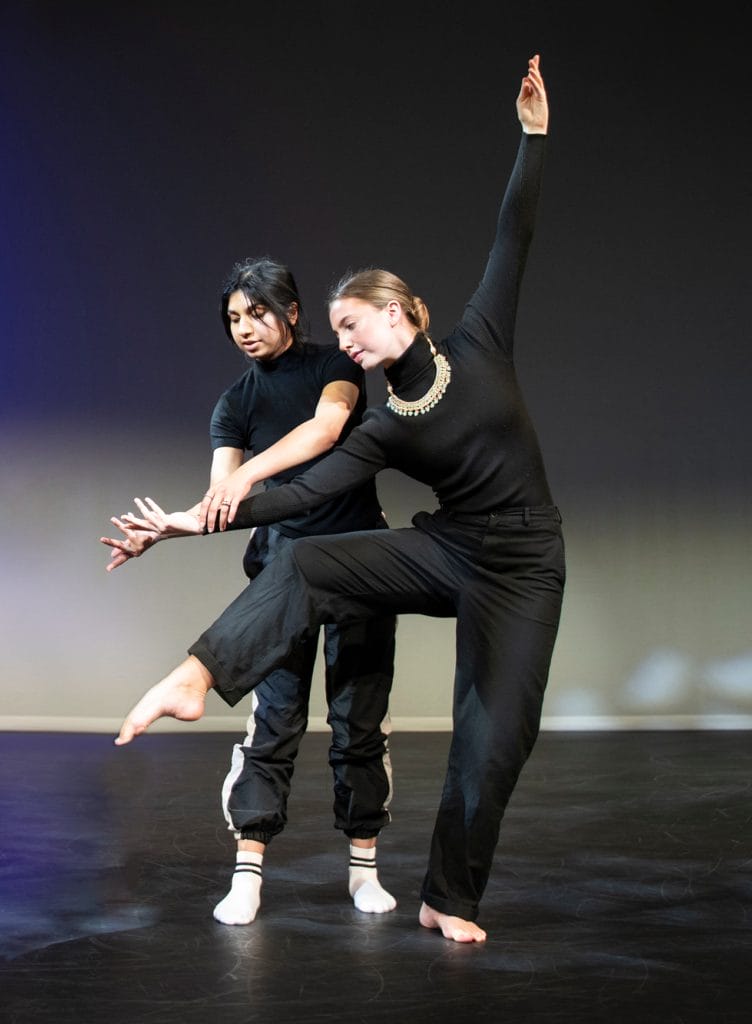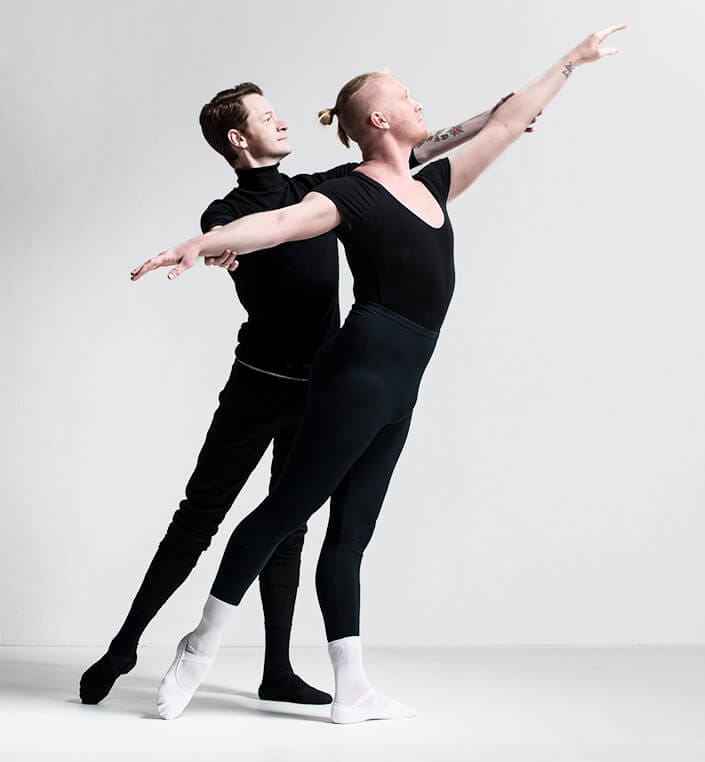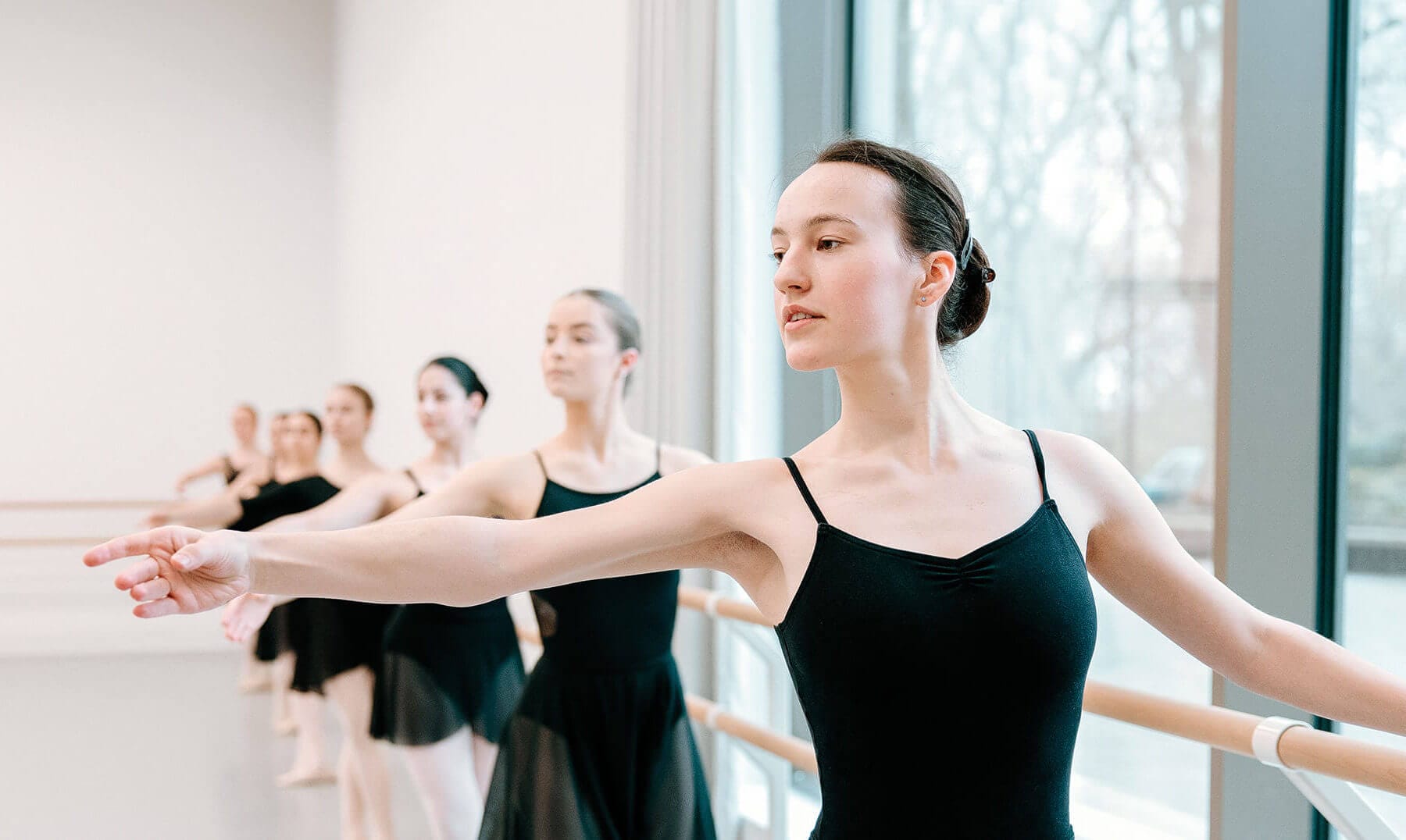Certificate in Dance Teaching (Ballet)
Wednesday 1 January 2025
2 years part-time
Location:
Start:
Wednesday 1 January 2025
Duration:
2 years part-time
Language:
English, German, Greek, Italian, Japanese, Korean, Mandarin, Portuguese, Spanish
Fees:
£5,350
Apply by:
Monday 12 August 2024
Level/Credits:
Level 4 (120 Credits)


Our new certificate program allows you to specialise in ballet teaching and gain a teaching qualification. You will develop the knowledge, understanding and skills to prepare you for your first steps in teaching dance to a wide range of students in different dance contexts.
Delivered through a combination of guided independent study, online learning and studio-based teaching practice, you will gain essential dance teaching skills and establish a foundation for lifelong learning.
You will be provided with one-to-one tuition and mentoring from our leading experts in dance teaching, as well as benefiting from collaborative learning opportunities with your fellow students as part of our worldwide student and teaching community. On successful completion, students are eligible to become Registered Teachers of the Royal Academy of Dance and may also choose to progress to one of our Higher Education programme
Further information is available in the programme factsheet.
Your student experience
Year 1 starts with a five-day online in January. You will study three modules by distance learning, undertake a series of teaching observations and begin practice teaching. You will also attend a five day Intensive Study Period (ISP) in August and be asked to identify a Mentor for your teaching placement. In Year 2, you will attend a two-day online induction in January ahead of an extended teaching placement of 38 weeks between January and October.
Over the course of the programme you will explore models of learning and the cognitive and physiological development of learners. You will be introduced to theories of learning and teaching, as applicable to the teaching of dance, and explore how these theories are applied in practice to the teaching of ballet. You will also cover the importance of health, wellbeing and safe practice for every student who takes ballet classes, whether they be children, young people or older learners. You will learn to analyse and evaluate ballet vocabulary for teaching, prepare teaching materials tailored appropriately to meet learner needs and employ a range of techniques and skills to review, consolidate, reflect and extend knowledge of ballet and pedagogical principles.
In your teaching practice, you will learn how to evaluate student learning needs and plan and deliver effective and inclusive learning experiences. You will learn how to teach ballet effectively and safely through sound demonstration as a ballet teacher, manage diverse dance class environments and respond effectively and meaningfully to individual learner needs. By the end of the programme you will have the knowledge, understanding, skills and confidence in taking your first steps as a qualified ballet teacher.
As a part-time student teacher you should expect to study a minimum of 20 hours per week which includes guided study tasks, independent research and preparing classes.
Delivery
The programme is delivered part-time over two years through distance learning, enabling you to study alongside other commitments. You will receive one-to-one tutorial support from experienced tutors, with opportunities for collaborative study through online student forums. Each module is supported by a comprehensive module study guide and online materials.
Students are required to attend a 5-day Intensive Study Period in Year 1 and complete a mentored Practical Teaching Placement in Year 2.
What do intensive study periods involve?
The Intensive Study Period (ISP) gives you an opportunity to work face-to-face with an experienced RAD tutor, musician and your fellow student teachers. During the five days you will examine the key principles and practice of teaching classical ballet covering topics such as the foundations and progressions of classical ballet, working with music (both with pianists and recorded music), enchaînment construction and teaching pointe work. You will also explore important aspects of dance pedagogy including classroom and behaviour management, teaching strategies, the use of vocal dynamics and lesson planning, with opportunities for peer teaching, allowing you to put theory directly into practice in the ballet studio.
Entry requirements
You should hold RAD Intermediate, or a recognised equivalent examination in ballet. Applicants without formal qualifications may be considered on submission of video evidence. (Please refer to the How to Apply section for guidance on the content of the video). Applicants must be aged 18 or older by the start date of the programme. Entry into the programme is subject to an enhanced DBS or equivalent criminal record check.
Course language
The Certificate in Dance Teaching (Ballet) is delivered internationally, via distance learning, in nine different languages, providing access to teacher training and eligibility for registration as a dance teacher with the RAD. For information on this programme please contact the RAD National Office in your country. If you wish to study as part of the UK cohort, please contact Registry in the Faculty of Education, faculty@rad.org.uk.
Please note that if the language of delivery is not your first language; it is your responsibility to ensure that you are able to read, write and speak proficiently in that language. If you are considering studying in English, and this is not your first language, please visit the International English Language Testing System (IELTS) website. Although the test is not required for Certificate in Dance Teaching (Ballet) it is a good indicator of the standard of English required for the programme, students should achieve a score of 6.5 on the IELTS test.
Career prospects
The combination of developing educational best practices together with intensive training in practical teaching skills enables our graduates to become informed, independent and articulate ballet teachers able to take up employment within the private dance studio sector and community settings where ballet is taught. Former RAD graduates have gone on to work all over the world as ballet teachers. Many are offered employment within their placement schools or are successful in establishing their own dance school businesses.
Further study and career development
Following successful completion of the Certificate in Dance Teaching (Ballet) you may wish to progress to study one of our other Higher Education programmes.
More Questions
Download the Frequently Asked Questions here.
How to apply
To apply for the Certificate in Dance Teaching (Ballet) in New Zealand, please contact RAD New Zealand National Director, Bronwyn Williams, below.
You must submit your application alongside a completed Reference Form.
Read further information on how to apply for all programmes here.
Contact
RAD New Zealand National Director
Bronwyn Williams
Assessment
Assessment is through a variety of modes including case studies, presentations, lecture demonstrations and practical teaching.
Award
Successful completion of the programme leads to the award of the Certificate in Dance Teaching (Ballet) and eligibility for registration as a dance teacher with the RAD, which will allow you to enter students for RAD ballet examinations.
Program Content
First year
From January to March
CDT First year
Learning to learn
This module explores how students interact differently as they progress through developmental stages and in different environments. Study assignments and observations will enable you to consider students’ cognitive, physiological and social development and apply this to practical teaching experiences. You are asked to reflect on your own experiences as a student and observer to compile case studies of students at various stages of education.
From April to June
CDT First year
The Dancing Body
This module will examine basic physiological and anatomical principles and consider legislative requirements as they apply to safe practice in dance teaching. You will be asked to reflect on your own experiences and relate them to what is considered safe and healthy practice in dance.
From June to October
CDT First year
The Fundamentals of Teaching: Principles and Practice
In this module you have the opportunity to begin developing your knowledge and understanding of dance pedagogy through practical application. You are required to attend a five-day intensive study period (ISP) to support your practical learning of fundamental teaching skills.
From January to October
CDT First year
Work-based practice
During the first year of the programme you will need to have access to at least one dance teaching context to undertake a series of observations (six observations per module). There is no formal approval process for these contexts and you will need to organise the observations yourself. In the first year you will also be asked to identify a mentor for your second year teaching placement and will begin working with your mentor as you complete the module The Fundamentals of Teaching: Principles and Practice to prepare for the second year.
Second year
From January to October
CDT Second yearCDT
Practical teaching
This module requires you to undertake a teaching placement for the duration of the module. Working with an approved mentor, you will be required to complete observations, teaching as an assistant and as a lead teacher throughout the three phases of the module: defining, improving and consolidating practice. Each phase is assessed individually. Throughout the module, you will be required to engage in structured study assignments to support preparation and reflection on your teaching practice.


